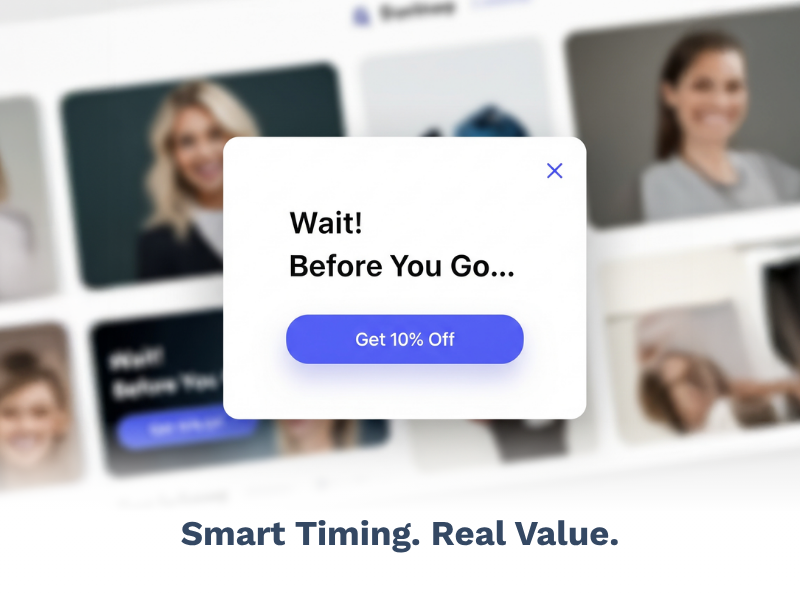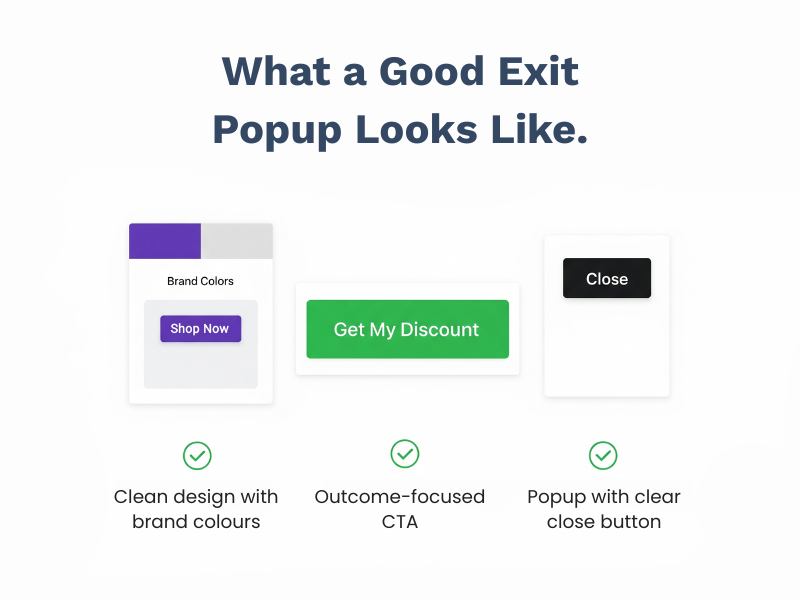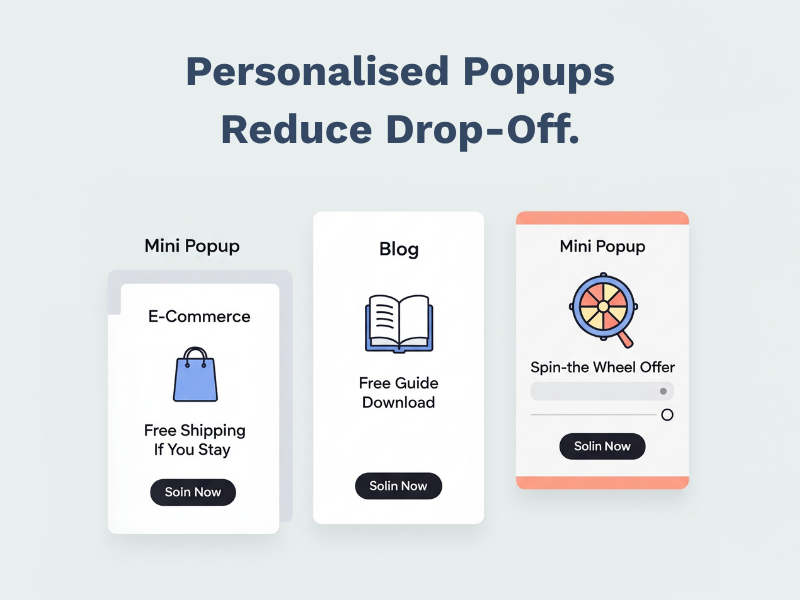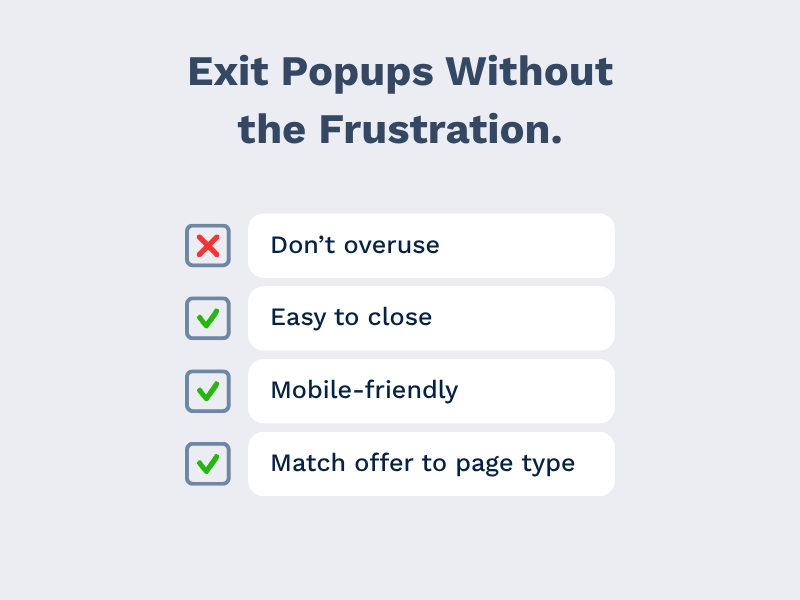A shopper is seconds away from leaving your website. Their cursor drifts toward the back button or the browser tab. Just then, a pop-up appears offering 10% off their first order. Do they stay, or do they get annoyed and close the tab even faster?
This is the delicate balance of exit intent popups.
When used thoughtfully, exit-intent popups can stop bounces in their tracks, re-engage visitors and boost conversions. But when used poorly, they do the opposite, frustrating users and pushing them away for good.
Research reports from across the industry show that exit-intent popups can save up to 15% of abandoned visitors and convert up to 7% into email subscribers or buyers-especially when they offer real value like a discount or free shipping.
However, popups that are poorly timed or irrelevant risk frustrating customers and driving them away. The key is to trigger popups only when users are about to leave, personalise the offer, and make them easy to dismiss, ensuring you boost conversions without sacrificing user experience.
The key is designing effective popups that trigger at the right moment, offer real value and respect the user’s experience. In this blog, we’ll explore how to use exit intent the right way, with proven strategies for reducing bounce rates without annoying your customers.

Exit intent popups are smart on-site tools that detect when a user is about to leave your website, usually by tracking rapid mouse movement towards the browser’s close button or back arrow. Just before they exit, a message appears offering something of value in hopes of retaining their attention.
Used correctly, exit-intent technology can be a powerful tactic for reducing bounce rates and salvaging traffic that’s on the verge of disappearing.

The success of an exit-intent strategy doesn’t just depend on the timing; it’s also about designing effective popups that add value without disrupting the user experience.
When executed with care, exit-intent popups can convert sceptical visitors into buyers, subscribers, or returning users, without driving them away.

When thoughtfully designed, exit intent popups can do more than just grab attention; they can actively stop visitors from leaving your site prematurely. One of the most effective ways to achieve this is by offering personalised incentives based on the type of business you run. For example, e-commerce brands can present users with a limited-time discount or free shipping offer, creating just enough urgency to prompt a purchase.
On the other hand, service-based businesses might provide value through downloadable guides, access to free webinars, or invitations to book a free consultation. The goal is to shift the user’s mindset from leaving to engaging.
Another clever use of exit-intent popups is to improve on-site navigation. Instead of pushing for a sale, you can suggest related products or content based on the user’s browsing history. This not only keeps visitors on your site longer but also enhances their experience by guiding them toward something they might have missed.
For brands looking to take it a step further, gamification adds an engaging twist. Interactive popups like spin-the-wheel discounts or mystery offers introduce an element of fun and curiosity, which often leads to higher engagement rates and more conversions. These creative approaches help reduce bounce rates without disrupting the user journey, turning a potential exit into a second chance.

To make exit-intent popups work without frustrating your visitors, it’s important to follow a few key best practices:
When you apply these principles, you can confidently use exit intent popups as a tool for reducing bounce rates while still offering a positive user experience.
When used correctly, exit intent popups can be a subtle yet effective way to keep users engaged, reduce bounce rates and boost conversions. The key lies in thoughtful design, triggering at the right moment, offering real value and always putting the user experience first.
By following best practices and regularly testing different strategies, you can turn your exit popups from an annoyance into an asset, one that supports both your brand goals and your customer journey.
Want to capture more leads without turning visitors away? Let’s build an exit intent strategy that works. Contact us today and let’s get the ball rolling!